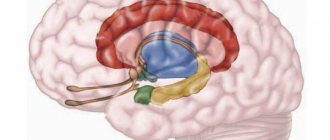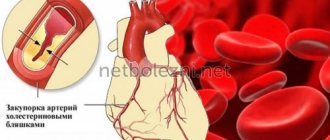Before we tell you how to treat neurasthenia, you should first understand what it is and what the symptoms of this pathological condition are.
Neurasthenia or asthenoneurotic syndrome is the most common type of mental disorder with mild changes. In essence, this is a severe depletion of the nervous system. Due to the similarity of symptoms, it is sometimes identified with chronic fatigue syndrome, however, as recent studies have shown, these conditions have different origins, so the treatment should be different.
A breakdown of the nervous system, which is neurasthenia, is a reversible phenomenon, regardless of how intensively and for a long time the manifestations of this syndrome were observed. It occurs without severe personality disorders and psychosis. But the person is well aware of his condition and tolerates it quite hard, which worsens the quality of his life.
Asthenic neurosis occurs due to some situation that traumatizes the psyche, coupled with chronic “lack of sleep” or a lack of other physiological needs, as well as overload of the body. To these factors are added various painful conditions, including infections.
Both men and women are equally susceptible to the disorder, but in the latter, due to the burden of various pathologies, it is more severe. As for the age limit, the majority of cases are people over 25 years old. This disease even received the “popular” name “manager’s syndrome.” But our fast-paced era has made its own adjustments: due to the complex school curriculum, intellectual and sports activity, representatives of the current younger generation also began to be diagnosed with neurasthenia.
It would be a misconception to believe that asthenoneurotic syndrome is characteristic only of residents of large cities. It’s just that people living in small settlements, including villages, are accustomed to attributing all health problems of this kind to simple fatigue, laziness, and bad character. Meanwhile, neurasthenia awaits every person.
Causes of nervous system breakdown
The development of the disease is facilitated by many factors that can be divided into groups.
Biological factors primarily include poor heredity. Also on the list:
- severe pregnancy of the mother, infectious diseases she suffered during this time;
- difficult childbirth associated with injuries to the baby;
- features of the nervous system;
- lack of sleep;
- physical and emotional exhaustion;
- lack of rest, relaxation;
- intoxication of the body with alcohol, tobacco or other substances;
- lack of vitamins;
- somatic diseases.
The psychological causes of the development of neurasthenia are psychological trauma received in childhood. In addition, it also contributes to:
- sudden stress under circumstances important to the individual, personal tragedy;
- long-term psychotraumatic situation, conflict;
- pessimistic mood.
Social factors cannot be avoided:
- characteristics of the family environment in childhood, upbringing, conditions of growing up;
- receiving a large flow of information, the processing of which requires special conditions and a lot of time;
- unique social circle, interests;
- dissatisfaction of personal aspirations.
Sports activities
Surprisingly, movement helps in many ways to cope with the destructive effects of stress. That is why it is recommended that when you are experiencing strong feelings, do not sit in one place, but try to move as much as possible. You can immediately start exercising, running, or cleaning the house. The main thing is that you can feel better. Movement promotes the production of positive hormones. This is how new strength appears to move on with life and make responsible decisions. Playing sports is an ideal solution for those who are used to taking full responsibility for what is happening.
Symptoms
Neurasthenia manifests itself with the following symptoms:
- Excessive irritability even over trifles, short temper, anger, constant dissatisfaction.
- Impatience - the desire to get everything at once, the impossibility of waiting - it literally “kills”.
- Constant feeling of fatigue, weakness.
- Pain in the temples or a sensation of encircling, squeezing pain in the head.
- Lack of ability to concentrate and do one thing for a long time.
- Violation of the sequence of thoughts, general perception of the environment.
Speaking in more detail about the symptoms of asthenoneurotic syndrome, it is more correct to consider the disorder in phases, since the intensity of its manifestation gradually increases. But more often the disease stops at a certain phase, that is, its development does not occur, which is reflected in the diagnosis.
Hypersthenic (excitable) form
This is the initial stage of the disease, which is recorded most often. It is characterized by nervousness, irritability, and excitability.
The patient is unnerved by any, even quiet, sounds (creaking and light knocking of the door, whispering, clock ticking, dripping water, etc.), bright light, the presence of people nearby and their movement. The most insignificant reason causes an outburst of emotions, uncontrollable irritation or even anger. Without realizing the reasons for aggression, a person can insult or offend someone.
The patient is impatient, strives to do several things at once, fusses, but his performance leaves much to be desired. It is not weakness or rapid fatigue that is to blame for this, but a problem with concentration and constant distraction.
The sleep pattern is disrupted: the patient is lethargic during the day, and at night he falls asleep with difficulty and sleeps poorly, with nightmares, and often wakes up. Waking up happens either earlier than usual or later.
Constant headaches are called “neurasthenic helmet” - they are compressive and very debilitating. Pain when turning and tilting the head moves along the spine to the back. Mental or physical stress makes them more intense.
Irritable weakness (intermediate form)
This phase combines severe irritability with a rapid decrease in the body's resources. In principle, this is a reflection of the clinical essence of the disorder.
Attacks of irritation are the most intense, outbursts of anger instantly turn to a stream of tears, completely unusual for the individual. Such tearfulness arises from the patient’s inability to overcome overwhelming discontent. The mood changes instantly: sometimes gloom, sometimes joy.
The patient is often lethargic, he is not interested in anything, his appetite becomes worse or disappears altogether. Digestion suffers, which is reflected by diarrhea, constipation, belching, and heartburn. The heart rate increases, pulse and blood pressure fluctuate. The limbs become sluggish, instability and so-called floaters appear before the eyes, a rush of heat is replaced by chills, redness of the skin is replaced by pallor. Libido decreases and men may experience problems with erectile function. There may be a frequent urge to urinate.
Hyposthenic (inhibitory) form
At this stage, depression, weakness, gloom, and lethargy are especially pronounced. I don’t want to do anything, but I don’t feel anxiety or melancholy. The patient’s thoughts are focused only on his own unpleasant sensations in the body, and he, assuming that he has some kind of serious illness, turns to doctors, who, naturally, do not find it.
Very often, neurasthenia can be eliminated with good rest. But if this does not help and the disease has gone too far, then you will have to leave yourself in the hands of professionals.
Setting goals
Until we know what we want to do, it can be difficult to figure out how to restore our psyche after severe stress. A person should be as clear as possible about his desires and capabilities. Without this understanding, it is impossible to move forward, remain satisfied with yourself and the accompanying achievements. Defining specific goals will help you stay on track and find the strength to radically change an unsatisfactory situation. The more clearly a person imagines the changes taking place, the easier it becomes to live.
Diagnosis and treatment
It will not be difficult for an experienced doctor - neurologist, psychiatrist or psychotherapist - to identify asthenic neurosis, separating it from other pathological disorders. Taking into account all of the above, he needs to exclude the presence of somatic diseases, oncology and organic lesions of the central nervous system in the patient.
The specialist will collect anamnesis and talk with the patient. In the case of classic symptoms with a predominant arousal reaction
A diagnosis of hypersthenic neurasthenia is made. If there are more inhibitory reactions, including drowsiness, then there is reason to believe that this is hyposthenic neurasthenia.
Comprehensive treatment of the disorder involves, first of all, normalizing the patient’s life, as well as the use of psychotherapy and medications.
It should be noted right away that you cannot “prescribe” medications for yourself, especially psychostimulants - they can lead to addiction and increased manifestations of the disorder.
The doctor selects medications based on the presence and severity of certain symptoms (a form of neurasthenia); the dose and duration of administration are prescribed individually for each patient. These are tonic or sedatives that normalize the functioning of the cardiovascular system, tranquilizers. It is mandatory to include general strengthening, restorative body functions, metabolism-improving agents, as well as vitamins C and B, antioxidants, neurorubin, etc. Plant extracts won't hurt either.
Psychotherapy includes psychoanalysis, individual and group sessions, conversations with a psychotherapist, and trainings. This allows you to identify and eliminate the causes of the disorder, change the patient’s attitude towards them, gain skills in separating the main from the unimportant and the ability to enjoy life.
Autogenic training will teach self-education and self-hypnosis, and hypnosis will help normalize heartbeat, blood circulation, and muscle tone.
A disease such as neurasthenia does not require hospitalization. When conducting therapeutic and drug treatment, specialists usually give patients the following advice:
- change the environment, walk in the fresh air more often, have a good time, travel;
- take a vacation, don’t check your email, turn off your phone - get a good rest, do something you enjoy that brings you pleasure;
- reduce emotional stress that negatively affects the psyche;
- establish a daily routine with a clear schedule that allows enough time for rest and sleep;
- strengthen the immune system, introduce a balanced diet, take vitamins;
- restore autonomic function through massage, acupuncture, warm foot baths, hot aromatic baths.
A good option for treating neurasthenia is to use traditional methods, but before doing this, you should consult with your doctor. Among the most effective options that have a beneficial effect on the autonomic and central nervous systems, we can recommend the following:
- Motherwort decoction. A tablespoon of herb is poured into a glass of boiling water, kept in a water bath for a quarter of an hour, allowed to cool and filtered. Take for a month 3 times a day.
- Hawthorn decoction. Brew berries (1 tbsp) with boiling water (a glass), filter after 45 minutes.
- Melissa and mint tea. Brewed like regular tea, this drink is soothing and promotes good sleep.
- Valerian tincture alcohol - 30 drops added to a small amount of water and drunk before going to bed.
- Lavender bath. Dried inflorescences (200 g) are placed in boiling water (5 l) and simmered for 7 minutes on fire. The broth is filtered and poured into a bathtub filled with warm water. You need to lie in it for 20 minutes.
- General strengthening mixture with raspberries, calamus root, birch leaves, chicory, strawberries, rose hips, oregano.
Meditation
The usefulness of this activity is truly difficult to overestimate. Meditation aims to bring balance to thoughts and feelings. Anyone who regularly practices Merkabah or Yoga Nidra certainly feels happy. Such a person has every chance of helping himself return to his former state of internal balance. It’s just important not to be lazy and follow your inner voice. When thinking about how to restore your psyche after stress, you should not neglect this opportunity. Meditation actually has a lot to offer, but only if it is practiced regularly.
Proper diet
Nutritionists have developed a special diet for those who want to stop being nervous and start enjoying life. If the body lacks potassium, calcium, magnesium, phosphorus and iron, then the nervous system and the entire body will suffer. It is especially important to ensure that the body receives the required amount of magnesium.
- You need to eat buckwheat, oat and wheat porridge more often.
- Phosphorus relieves muscle tension and stabilizes the functioning of the nervous system. The trace element is present in milk, cereals and beans.
- Calcium – regulates the functioning of muscles and nerves. Contained in milk, nuts and cabbage.
- Iron – contributes to the normal functioning of the thyroid gland, ensures normal metabolic processes. Present in seafood, river fish, fruits, green vegetables, baked goods.
- Potassium – normalizes the smooth functioning of nerves and muscles, prevents stress and nervous breakdowns. The lack of microelements can be compensated for by vegetables, fruits, lean meat and fish, and dried fruits.
Working with a psychologist
This is the best scenario imaginable. A high-level specialist knows how to minimize the destructive effects of stress and avoid negative consequences. Today there is no point in trying to fight your problems alone. It is much more valuable to be able to entrust your disturbing thoughts to a stranger and want to correct the situation.
Thus, stress must be dealt with. There is no need to hush up problems and burden the psyche even more. A person must, first of all, take responsibility for what is happening. No one will do this for him. If the problem is so strong that it prevents you from living happily, it is highly recommended to contact the community of psychologists and rehabilitation specialists Irakli Pozharisky. Your problems will not go unnoticed.
How to calm your nerves using breathing practices
When choosing appropriate exercises to calm the nervous system, you need to act within the framework of the rules already established empirically. If you ignore them, the result at best will be zero, and at worst it may worsen. There are just a few simple recommendations:
- For any breathing exercise, you need to completely straighten your back. This must be strictly observed, regardless of the position in which the exercises are performed - you can lie down or stand.
- When practicing conscious breathing, it is better to close your eyes; it is not forbidden to meditate and imagine yourself against the backdrop of pleasant landscapes.
- The focus, especially at the beginning, should be the practice of inhalation and exhalation.
- To complete cleansing of the mind from negativity, it is necessary to add absolute relaxation of all muscles. It should start from the tips of your toes and move upward. You will have to work hard so that the muscles located in the neck, face, and shoulders also get rid of tension.
- It is necessary to perform exercises to calm the nervous system from 5 to 10 times. You can move on to the next level and master a new technique only after a certain time - the body must have time to adapt.
As you exhale, it is better to imagine that the whole body is filled not only with oxygen, which is extremely important for life, but also as if pure, bright energy appears. To push out tension from within, be sure to use a strong exhalation.
Sometimes it’s a good idea to combine activities with positive messages spoken mentally. For example, an excellent statement would be “I am calm.” You need to “forget” the use of the particle “not” and not strive for the future tense. You need to feel and act directly in the moment that is happening.
Exercise 1
This type of exercise is well and truly aimed at combating tension. During the exercise, posture is not critical. The main thing is that the person is comfortable. Everything depends on his choice. He can stand up, or he can sit on a chair, it doesn’t matter fundamentally. First, you should inhale as deeply as possible, then hold your breath for a while. Imagine a small circle in your mind, and after a while exhale it as slowly as possible. Having done similar manipulations with the circle 3 more times , you need to focus on the square and get rid of it in exactly the same way.
Exercise 2
To perform it, you need to lie down so that your back is straight. After this, adjust your breathing to a calm rhythm. During entry, it is necessary to imagine that from the incoming oxygen the lungs become the focus of vital force, which they share with the rest of the organs of the human body as they exhale.
Exercise 3
This technique takes advantage of yawning. According to many experts, during a yawn, oxygen fills the blood, and at the same time it is freed from excess carbon dioxide. Due to additional tension on the face, neck, and oral cavity, blood flow in the vessels of the brain accelerates. When a person yawns, the lungs are better supplied with blood, and it is pushed out of the liver, the tone of the body becomes increased, and impulses are created that delight with bright, positive emotions.
A yawn then becomes healthy when performed technically correctly. You need to completely close your eyes and open your mouth wide. After you have managed to achieve strong tension in the oral cavity, you need to say and sing in a low tone and drawl: “U-oo-oo-oo.” At the same time, you should imagine that a cavity has appeared in your mouth, which needs to slowly move down. To a yawn, you need to add stretching with your whole body. The exercise you perform will become even more effective if you perform it while smiling. A smile will give you an additional chance of creating positive emotions, and at the same time will help relax the muscles in the face.
Exercise 4
If you anticipate a psychologically stressful situation that cannot be avoided, the following technique will help you maintain composure. It is necessary to imagine that the body has acquired a powerful press located at chest level. Then begin to take short and energetic breaths, without losing the feeling that there is still a strong and heavy press in the chest. Next you should move on to slow, long exhalations. At this time, you need to imagine that the heaviness descends lower, grabbing and displacing sensations of emotional tension and tangles of unpleasant thoughts from the body. The exercise ends with the mental “shooting” of all negative emotions into the ground. This is how the press worked.











